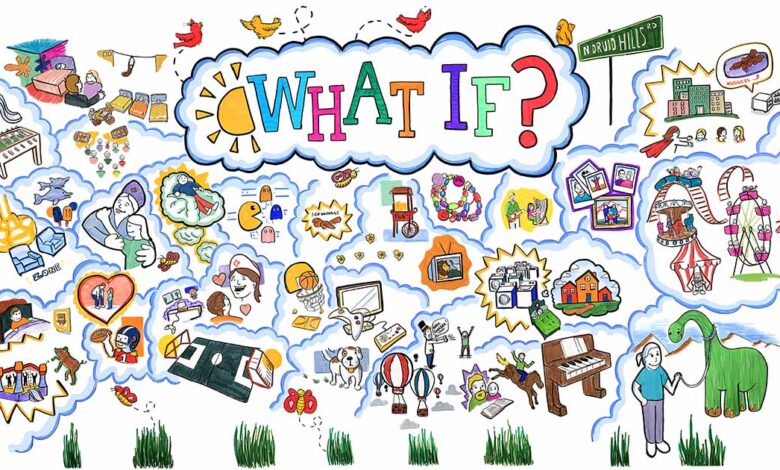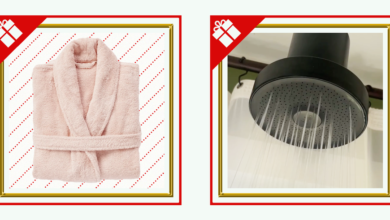The IT strategy behind a groundbreaking new $2B pediatric hospital

Children’s Healthcare of Atlanta Arthur M. Blank Hospital is scheduled to open this September. It was built from the ground up with the very latest healthcare information technology.
It is one of the largest and most advanced pediatric hospitals in the world. It cost more than $2 billion. It is 19 stories tall, with nearly two million square feet. It has 90 robots – who have their own six elevators.
It features deep device integration, artificial intelligence, location awareness, video and patient engagement technology – all focused on helping clinicians save steps and make better decisions while providing an excellent patient experience.
Jeremy T. Meller is chief information officer at Children’s Healthcare of Atlanta Arthur M. Blank Hospital. We spoke with him to get the inside story of the creation of this facility’s health IT strategy and the implementation of the very latest technologies.
Q. What was the overarching health IT strategy that went into creating the hospital from the ground up?
A. We are so proud of all the planning and work that has gone into Children’s Healthcare of Atlanta Arthur M. Blank Hospital opening in September. The overall hospital visioning process began more than seven years ago. Children’s worked with our Patient and Parent Advisory Council to understand what our families thought was most important for a new hospital.
We received so many valuable and creative responses that led to recommendations such as a second television in the room and washers and dryers on each floor. Our councils worked to understand the themes for what would make the most healing environment, with the best care possible for the kids we treat.
We also worked cross-functionally to learn about the leading practices in hospital design, understand pain points our staff were experiencing, and where we thought technology and innovation were headed in the future. But things move quickly. When we started the process in 2017, we assumed self-driving cars would need to be accommodated.
Meanwhile, we had no idea a global pandemic was on the horizon and we would be dealing with workforce issues. People were still confusing algorithmic bots with AI and nobody was talking about generative AI at all. We adapted our plans over the last few years to accommodate the new realities and needs we learned.
Our technology strategies started to form when we held massive-scale workflow simulations as part of our facility design process. Children’s created “Cardboard City” by transforming a 100,000-square-foot warehouse into one of the largest, full-scale hospital mock-ups in the country. Using more than 12 miles of tape and 10,000 square feet of cardboard, our hospital planning and simulation teams built the mock-up to test drive the 3-D design plans and determine how the layouts might affect employee workflow, patient care and family experience.
“We have a long-term investment in predictive analytics but are more recently looking at how generative AI can be used in meaningful and safe ways.”
Jeremy T. Meller, Children’s Healthcare of Atlanta Arthur M. Blank Hospital
Through this process, we identified space requirements needed to be reworked in some areas, plug locations might be wrong, or we needed technology to help address an issue.
An example of this is the physical side of Arthur M. Blank Hospital. At nearly two million square feet, it rivals or exceeds many professional football stadiums in scale. This is in part because every patient room is spacious, with separate areas for parents. Parents will have a desk, a sofa bed, and their own television.
These amenities are sure to improve the quality of experience, but they also bring technology implications, such as increased network load. The physical size itself means moving around will simply take more time.
An extra 10,000 steps could impact the length of time it takes for a nurse to reach a patient room, so we were challenged to find ways that technology could help with communication, reduce steps (both physical and process steps), and improve the quality of care we were going to be providing.
Q. Were there special IT considerations because it is a pediatrics hospital?
A. Pediatric healthcare brings with it additional complexities in almost every way. Equipment must be sized for stages of anatomical childhood development. Care protocols are different and more complex.
Children respond differently to medical interventions, and most systems are not designed from the ground up to be oriented toward pediatric medicine. The electronic health record has more complexity, and providing access to patient records is more involved because a legal guardian relationship must be determined.
There are real-world reasons why pediatric hospitalizations are resource-intensive, but this doesn’t mean finding experienced clinical staff and physicians is any easier. Our needs are more intensive, and we must do everything we possibly can to support our clinicians in providing the best care possible.
To help save physical steps and reduce time burden, we’ve integrated screens outside of each patient room with halo lights that change color depending on who is in the room. This is dependent on RTLS badges staff will wear once the hospital opens, and provides a visual clue that can reduce steps.
Locations are updated on status boards, and clinicians can review who is or was with the patient. This will help improve staff coordination, and in turn, patient care.
Q. You have 90 robots. Please talk about the place robotics holds in the hospital and what kinds of things they will be doing.
A. We are really excited about opening Arthur M. Blank Hospital with the world’s largest fleet of robots. We will have two types of robots, autonomous mobile robots and Robos. About a third will be patient facing, helping to deliver meals or medications and pick up labs or other items that cannot go through the tube system.
Our back-hall “tugs” are designed with a platform to slide under specially designed carts that will haul heavy linen and trash. Arthur M. Blank Hospital has six elevators designed specifically for the robots. The system will include advanced algorithms and camera technology to determine location and bin utilization.
Logistical planning for the new hospital has been key for our teams as well. Our intelligent supply chain management system uses RFID technology to better automate stock and billing processes. Our pneumatic tube system has traffic-control monitoring, and our pressurized trash-chute system even has radiation monitoring.
Everything is connected. We have nearly 60 facility- and supply chain-related systems – most of them are systems we have in other facilities, but at our new hospital they are networked, automated and monitored.
Q. You told me the hospital will feature deep device integration and artificial intelligence. Please elaborate.
A. Like many organizations, we have a long-term investment in predictive analytics but are more recently looking at how generative AI can be used in meaningful and safe ways. Everyone talks about how AI will change the world, change healthcare. But for AI to be useful, it needs to have content, it needs data. For predictive deterioration algorithms to be most effective, timely bio-physio data is needed.
Many hospitals have IT systems and medical equipment, but they aren’t deeply integrated. A nurse will be standing at a computer, looking at a patient monitor (another computer) and keying in hourly vitals. This is an outmoded paradigm that needs to shift to real time.
We are integrating virtually every type of device that can provide this data, pulling it into our analytics systems, and currently are developing 11 predictive models to assist our clinical teams, helping them decide where to focus or make better, safer decisions.
Waveforms will be available to clinicians in real time on their mobile clinical smartphones, allowing them to better triage alarm response, such as seeing when a lead is disconnected. The nurse call system is integrated into our RTLS so alarms will auto-silence when a nurse enters the room.
Q. What kinds of patient engagement technologies do you have and what are the expected outcomes?
A. We know patients would probably rather be home than in the hospital, and that is why we’ve designed rooms that are all large and designed for the greatest comfort and connection for the whole family.
We will have multiple screens in each room. We will have the traditional patient education and entertainment screen, as well as a second TV for parents and a vertically mounted virtual whiteboard. The RTLS system will be integrated into the room, and when a clinician enters, a pop-up will appear on the television and whiteboard showing who just entered.
The whiteboard will provide information useful to the patient and family, including a daily schedule and a list of care team members. When the physician or nurse enters the room, the display will change, allowing the caregiver to pull up relevant information and radiology images to communicate with the patient.
A high-quality pan-tilt-zoom camera also is installed in every room and will allow caregivers, interpreters or even family members to dial into the room. It will turn away for privacy when not in use and all calls will be accepted or declined from the pillow-speaker.
Q. In the end, what are your goals as the CIO of this new high-tech hospital?
A. The new Arthur M. Blank Hospital will be one of the most advanced facilities in the world when it opens in September. My goal is we use technology to help clinicians provide the best care possible through more intelligent systems, save steps through improved communication and technology-supported visual processes, and improve care and experience through improved patient engagement.
Of course, we can’t do anything in IT without an eye on cybersecurity, so that has been an integral part of everything we have done in advance of opening the hospital. All the new systems and capabilities have been carefully evaluated and implemented to provide the greatest safety and security possible.
Follow Bill’s HIT coverage on LinkedIn: Bill Siwicki
Email him: [email protected]
Healthcare IT News is a HIMSS Media publication.


